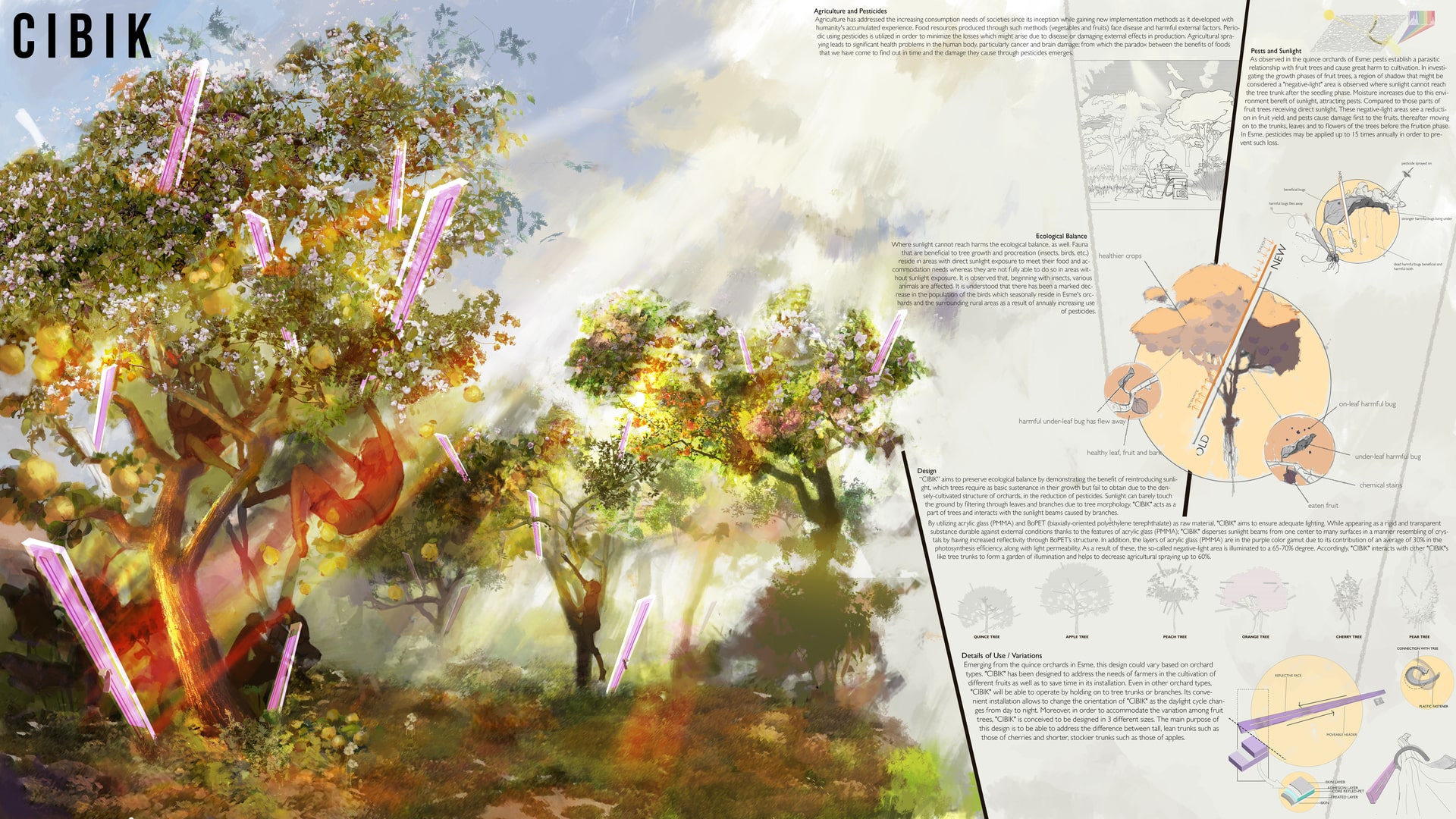Project Description
Agriculture and Pesticides Agriculture has addressed the increasing consumption needs of societies since its inception while gaining new implementation methods as it developed with humanity's accumulated experience. Food resources produced through such methods (vegetables and fruits) face disease and harmful external factors. Periodic using pesticides is utilized in order to minimize the losses which might arise due to disease or damaging external effects in production. Agricultural pesticide spraying, aimed for continuity in production, appears beneficial for basic foodstuff at first whereas that is not the case for those who consume them. Agricultural spraying leads to significant health problems in the human body, particularly cancer and brain damage; from which the paradox between the benefits of foods that we have come to find out in time and the damage they cause through pesticides emerges. Fruit Orchards - Esme At the town of Esme in Turkey, which is our topic of research, many types of fruits and vegetables are grown as a result of its confluence of weather and water resources. Esme is among the important fruit production centers of Turkey particularly with its geographically-indicated quince fruit. However, as observed in the cultivation of all fruit and vegetable species, disease and pests frequently emerge to lower the yield in quince orchards. Pests and Sunlight As observed in the quince orchards of Esme; pests establish a parasitic relationship with fruit trees and cause great harm to cultivation activities. In investigating the growth phases of fruit trees, a region of shadow that might be considered a "negative-light" area is observed where sunlight cannot reach the tree trunk after the seedling phase. Moisture increases due to this environment bereft of sunlight, attracting pests. Compared to those parts of fruit trees receiving direct sunlight, these negative-light areas see a reduction in fruit yield, and pests cause damage first to the fruits, thereafter moving on to the trunks, leaves and to flowers of the trees before the fruition phase. In Esme, pesticides may be applied up to 15 times annually in order to prevent such loss. Ecological Balance The negative-light area where sunlight cannot reach harms the ecological balance, as well. Fauna that are beneficial to tree growth and procreation (insects, birds, etc.) reside in areas with direct sunlight exposure to meet their food and accommodation needs whereas they are not fully able to do so in areas without sunlight exposure. It is observed that, beginning with insects, various animals are affected. It is understood that there has been a marked decrease in the population of the birds which seasonally reside in Esme's orchards and the surrounding rural areas as a result of annually-increasing use of pesticides. This path, retarding natural growth and leading all the way from negative-light areas to spray, causes irredeemable dangers instead of benefits. Design “CIBIK” aims to preserve ecological balance by demonstrating the benefit of reintroducing sunlight, which trees require as basic sustenance in their growth but fail to obtain due to the densely-cultivated structure of orchards, in the reduction of pesticides. Sunlight can barely touch the ground by filtering through leaves and branches due to tree morphology. "CIBIK" acts as a part of trees and interacts with the sunlight beams caused by branches. By utilizing acrylic glass (PMMA) and BoPET (biaxially-oriented polyethylene terephthalate) as raw material, "CIBIK" aims to ensure adequate lighting. While appearing as a rigid and transparent substance durable against external conditions thanks to the features of acrylic glass (PMMA); "CIBIK" disperses sunlight beams from one center to many surfaces in a manner resembling of crystals by having increased reflectivity through BoPET’s structure. In addition, the layers of acrylic glass (PMMA) are in the purple color gamut due to its contribution of an average of 30% in the photosynthesis efficiency, along with light permeability. As a result of these, the so-called negative-light area is illuminated to a 65-70% degree. Accordingly, "CIBIK" interacts with other "CIBIK"s like tree trunks to form a garden of illumination and helps to decrease agricultural spraying up to 60%. Details of Use / Variations Emerging from the quince orchards in Esme, this design could vary based on orchard types. "CIBIK" has been designed to address the needs of farmers in the cultivation of different fruits as well as to save time in its installation. Even in other orchard types, "CIBIK" will be able to operate by holding on to tree trunks or branches. Its convenient installation allows to change the orientation of "CIBIK" as the daylight cycle changes from day to night. Moreover, in order to accommodate the variation among fruit trees, "CIBIK" is conceived to be designed in 3 different sizes. The main purpose of this design is to be able to address the difference between tall, lean trunks such as those of cherries and shorter, stockier trunks such as those of apples.
